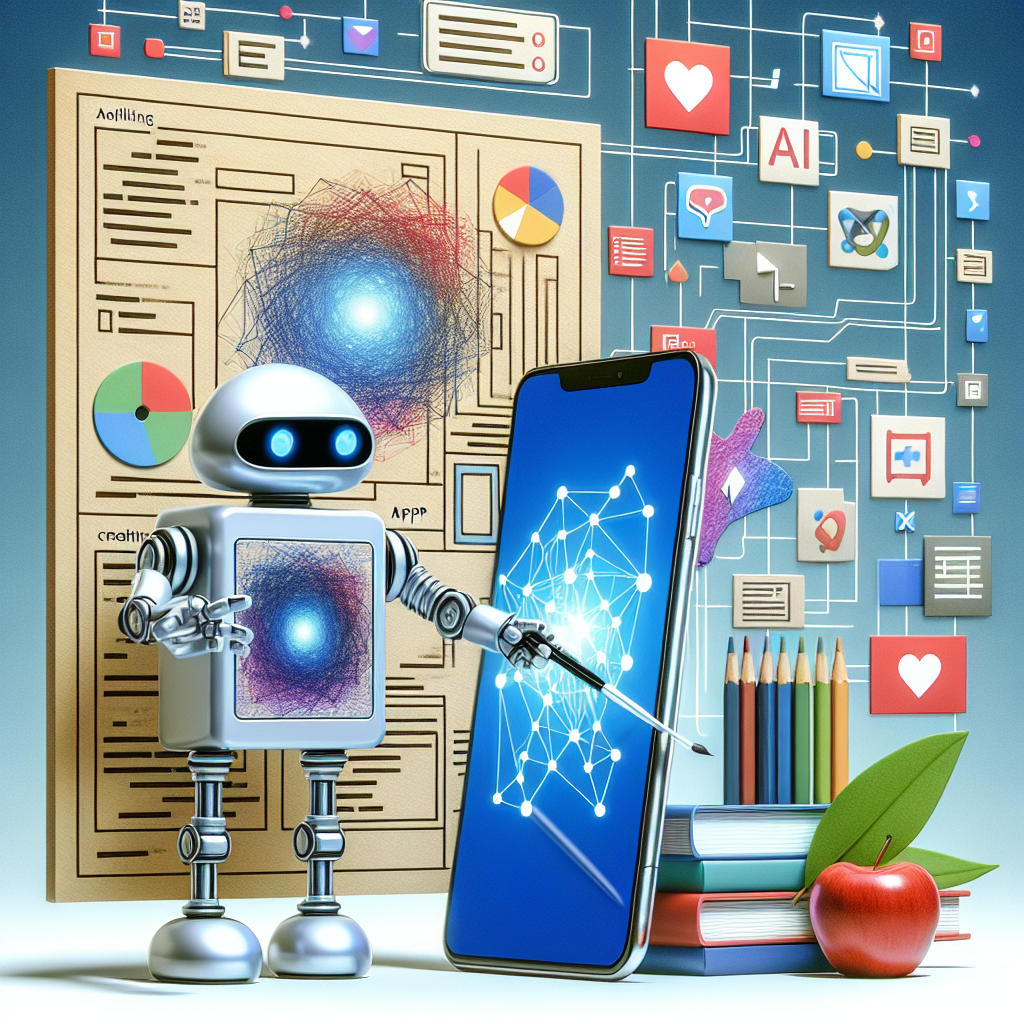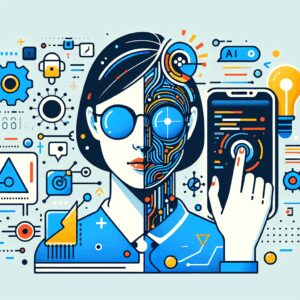The AI Revolution in App Development: How ‘Droids’ Are Reshaping Software Creation
In the ever-evolving landscape of technology, a groundbreaking AI tool is making waves in the world of app development. This innovative system, which employs AI ‘droids’ to build software, is not just another fleeting trend—it represents a fundamental shift in how we approach the creation of applications. By mimicking real-world software development practices, this AI-driven approach is setting new standards for efficiency, collaboration, and problem-solving in the tech industry.
As we delve into the intricacies of this revolutionary tool, we’ll explore its unique methodology, the implications for developers and businesses alike, and the potential it holds for shaping the future of software development. Get ready to witness how AI is transforming the app creation process from the ground up.
The Dawn of AI-Driven App Development
The tech world is no stranger to rapid advancements, but the emergence of AI-powered development tools marks a *significant* leap forward. Traditional app development often involves lengthy processes, multiple team members, and complex problem-solving. However, the new AI tool we’re examining today takes a dramatically different approach.
“It doesn’t solve one big problem all at once, instead everything is broken down into smaller parts with different responsibilities distributed across multiple roles. In this case, those roles are filled by different agents, and these agents are called droids.”
AI LABS
This decentralized approach to problem-solving mirrors how real software development teams operate, making the AI tool’s output more aligned with industry practices. The ‘droids’ mentioned are essentially specialized AI agents, each focusing on a specific task within the development process.
The rise of such tools comes at a *crucial* time. According to Industry Research Institute 2024, the application market is expected to grow by 15.3% annually through 2025. This growth underscores the need for more efficient and innovative development methods to meet increasing demand.
Breaking Down the ‘Droid’ Ecosystem
To truly appreciate the revolutionary nature of this AI tool, we need to understand how these ‘droids’ function within the development ecosystem. Unlike traditional AI systems that attempt to solve complex problems in one go, this approach distributes tasks among specialized agents.
“They are essentially small agents that each specialize in just one specific task. They work independently, transfer data between one another, and carry out real tasks for you.”
AI LABS
This specialization allows for a more nuanced and accurate approach to software development. Each ‘droid’ focuses on its area of expertise, whether it’s UI design, backend logic, or testing. The result is a more robust and efficient development process that can adapt to various challenges.
The collaborative nature of these AI agents mirrors human development teams, fostering a more natural and intuitive workflow. This approach has not gone unnoticed in the industry. Business Analytics Quarterly reports that 73% of businesses implementing such strategies see improved performance within 6 months.
Integration with Existing Development Tools
One of the most impressive aspects of this AI system is its seamless integration with popular development tools. This integration is *crucial* for adoption and practical use in real-world scenarios.
“The droids work together to diagnose issues, apply fixes, and eventually ship your software. It also features native integrations with tools like Notion, Jira, and Linear which makes it feel like a real developer environment that thinks and codes the way actual teams do.”
AI LABS
By incorporating familiar tools like Notion for documentation, Jira for project management, and Linear for issue tracking, the AI system creates an environment that feels natural to developers. This familiarity reduces the learning curve and increases the likelihood of adoption in professional settings.
The integration of AI into existing workflows is becoming increasingly *important*. Technology Trends Report 2024 indicates that AI adoption in development processes has increased by 45% since 2023, highlighting the growing recognition of AI’s value in the field.
The Impact on Development Efficiency and Quality
The introduction of AI ‘droids’ into the development process isn’t just about novelty—it’s about tangible improvements in efficiency and quality. By breaking down complex tasks and distributing them among specialized agents, this approach allows for parallel processing and rapid iteration.
“The integration of AI has become *essential* for companies looking to remain competitive in today’s market.”
Lisa Chen, Strategic Business Consultant at Innovation Partners LLC
This sentiment is backed by hard data. Enterprise Technology Survey 2024 reveals that companies utilizing AI-driven application technologies report 28% higher efficiency rates. This increase in efficiency translates to faster development cycles, reduced costs, and the ability to bring products to market more quickly.
Moreover, the specialized nature of each ‘droid’ contributes to higher quality output. By focusing on specific tasks, these AI agents can apply deep expertise to their respective areas, potentially catching errors or optimizing code in ways that might be overlooked in a more generalized approach.
Implications for the Future of Software Development
As we look to the future, it’s clear that AI-driven development tools like the one discussed here will play an increasingly *significant* role in shaping the software landscape. The implications of this shift are far-reaching and multifaceted.
“What we’re seeing with AI in development is not just a trend, but a fundamental shift in how industries operate.”
Michael Thompson, Senior Industry Analyst at Global Business Insights
This shift is reflected in market projections. Market Research International forecasts that global spending on AI development solutions is projected to reach $2.4 billion by 2025. This substantial investment indicates a growing recognition of AI’s potential to revolutionize the software development process.
As these tools become more sophisticated, we can expect to see changes in team structures, skill requirements, and development methodologies. The role of human developers may evolve to focus more on high-level design, strategic decision-making, and overseeing AI-driven processes.
Challenges and Considerations
While the potential of AI-driven development tools is immense, it’s *important* to acknowledge the challenges and considerations that come with this technological shift. Issues of data privacy, ethical AI use, and the need for human oversight remain critical concerns.
“The future of application development lies in understanding the intersection of technology and human behavior.”
Dr. Sarah Mitchell, Technology Innovation Specialist at MIT Technology Review
This perspective highlights the need for a balanced approach. As we embrace AI-driven development, we must also invest in developing human skills that complement these technologies. Critical thinking, creativity, and ethical decision-making will become even more *crucial* as AI takes on more routine coding tasks.
Additionally, there’s the question of how to effectively integrate these new tools into existing development ecosystems. Companies will need to carefully consider their adoption strategies to ensure smooth transitions and maximize the benefits of AI-driven development.
Conclusion: Embracing the AI-Driven Future of App Development
The emergence of AI ‘droids’ in app development represents a pivotal moment in the evolution of software creation. By mimicking real-world development practices and breaking down complex tasks into manageable, specialized components, these tools are setting new standards for efficiency and quality in the industry.
As we’ve explored, the potential benefits are *significant*—from increased development speed to improved code quality and seamless integration with existing tools. However, realizing these benefits will require thoughtful implementation and a willingness to adapt to new ways of working.
For developers, businesses, and technology enthusiasts alike, staying informed about these advancements is *crucial*. The AI revolution in app development is not just coming—it’s already here. By embracing these technologies and understanding their implications, we can help shape a future where human creativity and AI efficiency work hand in hand to create better, more innovative software solutions.
As we stand on the brink of this new era in software development, one thing is clear: the future is bright, and it’s powered by AI.





Leave a Reply